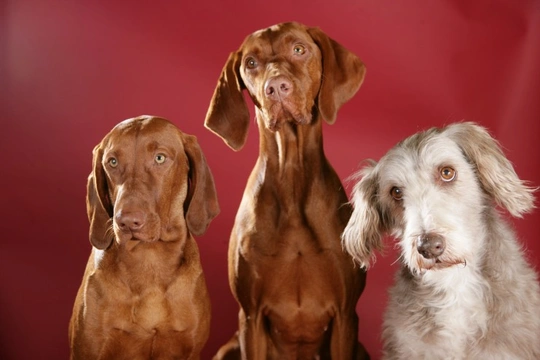
Seven top tips for managing life with two or more dogs
A huge number of the UK’s dogs live with at least one companion, and often many more! While keeping more than one dog is obviously more work in some ways than managing a single one, it also provides a range of potential advantages too, such as on the spot companionship, excellent socialisation opportunities, and twice the entertainment!
However, managing a multi-dog household can be challenging, and a few problems are likely to crop up along the way, just as might happen with human siblings or groups of children! Knowing how to stave off problems before they happen or deal with them when they occur is the key to keeping a multi-dog household happy and calm, and in this article, we will share seven top tips on managing two or more dogs in your household together. Read on to learn more!
Pick a good balance
Before you get any further into managing your multi-dog household, it is important that the dogs that you own all get on on a basic level, that their personalities complement each other, and that they will thrive rather than suffer through life with others. Some breeds of dog such as the Siberian husky are natural pack animals, while others, such as the Dogue de Bordeaux or the Shar-pei tend to be rather more speculative, and so can be harder to integrate into a multi-dog home.
Don’t play favourites
It is vitally important that all of your dogs are treated equally, which means playing fair when it comes to treats, attention, and one on one time with each dog. Don’t pick favourites or give one dog advantages over the others; not only is this unfair, but it can also lead to fighting and unhappiness between the dogs themselves.
Let your dogs form their own pecking order
A group of dogs housed together will naturally form their own pack and pecking order, and how this all shakes down can sometimes lead to surprises! A small, feisty terrier may well be higher in the pack rankings than a large, calm dog such as a St. Bernard, and it is important to allow your dogs to work out their own roles in their pack in relation to each other without any undue human intervention. Too much human input or stepping in when the dogs are working things out will only delay the process, and mean that it will take longer for your dogs to settle.
Train your dogs separately
Training is something that should be tackled with each dog individually; there are no group lessons when it comes to dog training at home! Dogs all learn at their own pace and in their own way, and it is virtually impossible for one handler to train two or more dogs all at the same time effectively. Taking this approach will mean that it takes you longer and achieves poorer results than if you added up the time spent teaching each dog one at a time!
Don’t let mealtimes turn into war
Feeding times can be one of the pinch points in the multi-dog household, and it is important to ensure that each dog not only gets their own meal, but they can eat it in peace without feeling that they have to gulp it down or lose it, or have to defend it against a dog that eats more quickly.
You may need to separate your dogs for feeding times or stagger their feeding times to ensure that all of your dogs get their correct meal, and can eat it in their own time without stress.
Manage play
Two or more dogs should be able to play together happily, ensuring that they have friends on hand and on the spot socialisation oppurtunities. However, play between your own dogs is something that you should still observe and manage when needed, to ensure that all of the dogs are playing fair, nobody is getting bullied, and that there are no scraps over toys and other resources. While play between two or more dogs is a good way of keeping the dogs occupied, this does not mean that the handler should just leave them to it!
Be the boss
While it is important to let your dogs work out their own pecking order and sort out minor spats in their own way, you should still be the pack leader, and clearly recognised by all of your dogs as the boss, and sometimes, referee. When you call your dogs or give them a command, they should all look to you and listen, and remain responsive even when playing and socialising.
Ensure that your dogs view you as the pack leader, and that the most dominant dog doesn’t think that he is in charge. If you are the alpha and the next dog down looks to you for guidance and direction, the other dogs will follow, establishing a good and workable status quo in your multi-dog home.



